Brisbane is rapidly emerging as one of Australia’s most e-bike-friendly cities. With its warm weather, expanding cycleways, and scenic river routes, the city offers an ideal environment for electric bike riding. Whether you’re commuting to work, exploring the riverside trails, or simply seeking a cleaner and more efficient mode of transport, electric bikes provide a smart, enjoyable alternative to cars and public transport.
Electric bikes, or e-bikes, combine traditional pedaling with electric motor assistance, making cycling more accessible to people of all fitness levels. For Brisbane riders, this means easier hill climbs, less effort in the summer heat, and the ability to cover longer distances without fatigue. Most e-bikes provide a range of 40 to 80 kilometers on a single charge, which comfortably covers daily commuting or weekend exploring.
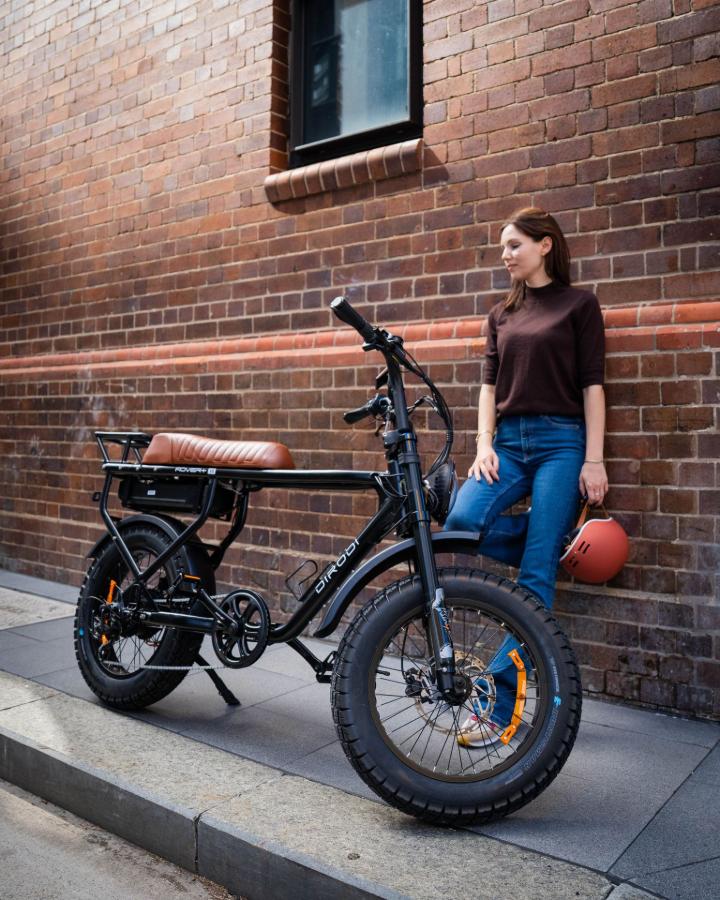
Cyclists in Brisbane benefit from an extensive and growing network of infrastructure, including dedicated bike lanes, shared paths, and bridges that link various parts of the city. Popular crossings such as the Story Bridge and Kurilpa Bridge are accessible by bike, making it easier to navigate between suburbs and the CBD. Riders are expected to follow basic rules—like keeping left, using a bell or voice when overtaking, and giving way to pedestrians—to ensure harmony on shared paths.
The city also boasts a number of popular e-bike routes, perfect for both daily use and weekend rides. The Brisbane River Loop offers a scenic circuit around the city’s riverbanks. Kedron Brook Bikeway provides a long, flat trail through leafy northern suburbs. The Bicentennial Bikeway, running along the river between Toowong and the city, is ideal for commuters. South Bank’s riverside paths and the coastal stretches of the Moreton Bay Cycleway are also local favorites.
The rise of e-bikes in Brisbane reflects a larger movement toward sustainable, efficient, and healthier urban mobility. Local government support, along with growing community interest, has created a solid foundation for e-bike culture to thrive. As more people discover the convenience and joy of electric biking, Brisbane is quickly becoming a leading example of what a modern cycling city can be.
1. E-Bike Public Structures and Parking in Brisbane
Brisbane is rapidly becoming one of Australia's leading cities in embracing e-mobility, particularly through the integration of electric bikes (e-bikes) into its public transport ecosystem. With growing investment in infrastructure, dedicated parking spaces, and new policies supporting sustainable transport, Brisbane is positioning itself as a forward-thinking city for commuters seeking alternative, eco-friendly mobility.
1.1. E-Mobility Strategy and Network Development
The Brisbane City Council has outlined a comprehensive e-mobility strategy, which includes significant funding and long-term planning to expand cycling infrastructure across the city. This forms part of the broader “Transport Plan for Brisbane,” which aims to accommodate more than 1,700 kilometers of bike-friendly routes by 2031. Between 2016 and 2020 alone, over $100 million was invested into cycling infrastructure.
Among the most notable developments is the Bicentennial Bikeway, a 4.8-kilometer riverside path that separates cyclists from pedestrians, greatly improving safety and capacity. This route is one of the busiest in the city, serving over 5,000 users each day. Another major advancement is the opening of the Kangaroo Point Green Bridge in late 2024, which now provides a safe river crossing exclusively for pedestrians and cyclists, enhancing east-west access for e-bike commuters.
1.2. Parking Infrastructure and Facilities
Brisbane’s e-bike-friendly infrastructure doesn’t stop at cycling paths. Public bike parking has seen a significant boost. Over 200 bike racks are distributed across the city, including “green heart” racks in areas like South Brisbane, Milton, and the CBD, which are designed to accommodate various e-mobility devices.
More secure options, like cyclepods and bike shelters, are installed at public transport hubs including ferry terminals and major bus interchanges. These facilities often require swipe card access, offering added security for e-bike users.
In the heart of the city, Cycle2City at King George Square is a standout facility. This membership-based center includes over 400 secure racks, CCTV monitoring, lockers, showers, and even ironing stations. A similar hub exists at the Royal Brisbane and Women’s Hospital, offering up to 750 spaces for bike commuters. These types of facilities make it more feasible for people to integrate cycling into their daily routines, especially for work commutes.
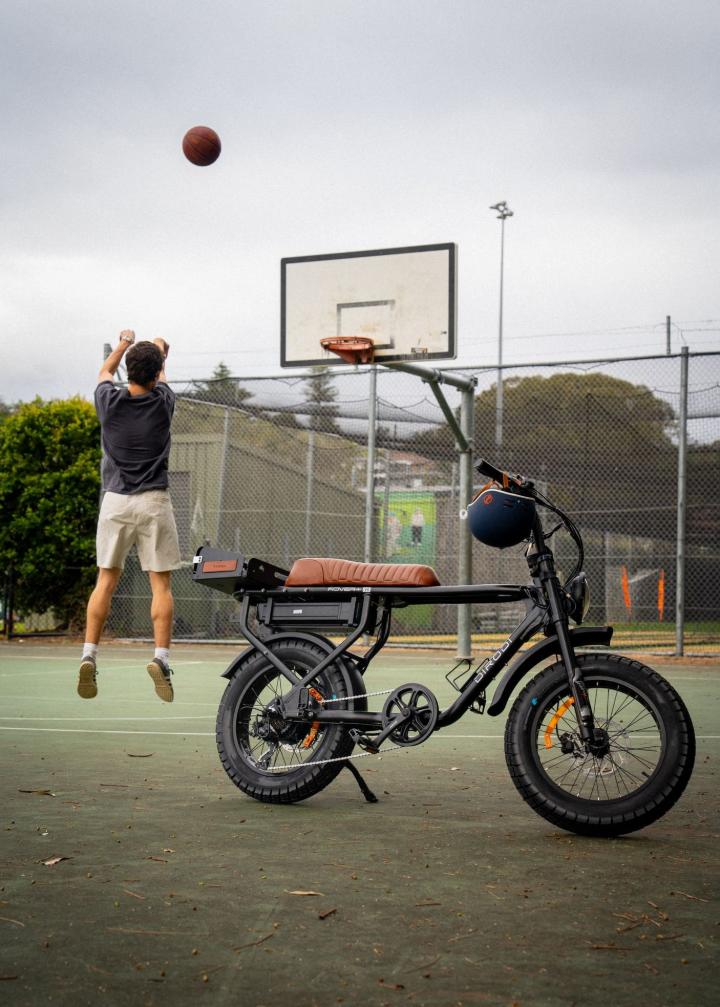
1.3. Managing Shared Paths and Parking Compliance
With the growing popularity of shared e-bike and scooter programs, safety and clutter management have become increasingly important. Brisbane City Council has responded with new rules and infrastructure to support proper parking and path sharing.
Dedicated e-mobility parking hubs are now appearing in high-demand areas, complete with signage to direct users to proper parking spots. Virtual parking zones are also implemented through GPS geo-fencing, especially by ride-share providers such as Neuron, Beam, and Lime. These virtual zones restrict users from ending trips outside of designated areas, helping reduce random clutter and improve safety for pedestrians.
Speed monitoring systems have been installed on certain bikeways, such as at Kangaroo Point, to alert riders when they exceed safe limits. Shared-path signage encourages riders to yield to pedestrians, keep left, and use bells when passing—measures designed to foster a respectful coexistence between walkers and riders.
1.4. Role of Operators and Public Response
Private e-bike operators have played a significant role in Brisbane’s e-mobility growth. With more than 6,500 shared devices in circulation, companies like Beam, Neuron, and Lime are now required to comply with Brisbane’s strict operational guidelines, including helmet enforcement, speed limits, and parking protocols.
Despite these efforts, public response has been mixed. Some residents express concern about the inconvenience and safety hazards posed by misparked devices. As a result, the Council has begun enforcing penalties and improving reporting tools to address violations more quickly and effectively.
1.5. End-of-Trip Facilities and Future Outlook
In addition to parking infrastructure, end-of-trip amenities are becoming more common in office buildings and public areas. Buildings like 400 George Street and 480 Queen Street now feature e-bike charging stations, shower facilities, and secure lockers, making it easier for professionals to commute sustainably.
Brisbane’s plan for the future includes continued expansion of cycleways, parking hubs, and integration with public transport networks. However, success will depend on collaboration between local government, operators, and the community to ensure safety, accessibility, and convenience.
Brisbane’s e-bike infrastructure is already reshaping the way residents move around the city. As more people embrace this form of transport, the city’s commitment to continuous improvement will be key in creating a truly inclusive and sustainable urban mobility network.
2. Scenic E-Bike Trails in Brisbane
Brisbane’s subtropical climate, rolling hills, and proximity to rivers and forests make it one of Australia’s most bikeable cities—especially for e-bike riders who want to explore with less physical strain and more time to soak in the views. Whether you’re a local looking for a weekend ride or a visitor hoping to see the city beyond the car window, Brisbane offers a wealth of scenic trails suited for e-bike exploration.
From riverside routes to lush suburban greenways, here are some of the best scenic public trails in Brisbane for e-bike riders.
2.1. Bicentennial Bikeway
Arguably Brisbane’s most iconic cycling route, the Bicentennial Bikeway runs alongside the Brisbane River from Toowong to the Central Business District (CBD). This 4.8-kilometre stretch is fully sealed, separated from pedestrian traffic, and features wide lanes perfect for e-bikes.
The riverside views are nothing short of spectacular—especially at sunrise or sunset. Along the way, you'll pass parks, public art installations, and outdoor cafes, making this not just a transport corridor, but a destination in itself. It’s also well-lit and popular among commuters and recreational riders alike.
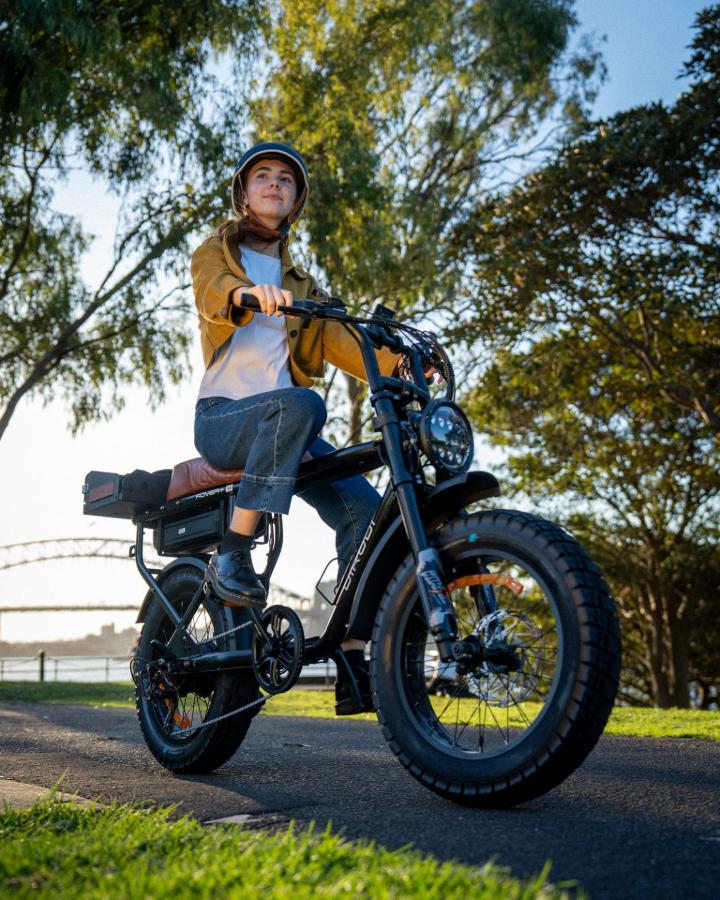
2.2. Kangaroo Point to New Farm via Riverwalk
A seamless and picturesque route connects Kangaroo Point Cliffs to New Farm Park, passing under Story Bridge and over the iconic Howard Smith Wharves Riverwalk.
This route showcases some of Brisbane’s most impressive urban scenery—towering cliffs, the city skyline, and the calm of the Brisbane River. The Riverwalk itself is a floating path that makes you feel like you're gliding over the water. The entire route is e-bike friendly, relatively flat, and dotted with resting spots, making it ideal for leisurely rides or photo breaks.
2.3. Kedron Brook Bikeway
If you’re looking to escape the city bustle, the Kedron Brook Bikeway provides a peaceful suburban and semi-natural retreat. Stretching over 20 kilometres from Toombul to Mitchelton, the trail follows the Kedron Brook waterway through a series of leafy parks, creeks, and sporting fields.
The bikeway is well-paved, quiet, and mostly flat—perfect for longer e-bike rides. It’s also one of the few trails in Brisbane where you’ll see more dogs and families than traffic. Birdlife is abundant, especially in the more natural sections near Stafford and Grange.
2.4. Brisbane Valley Rail Trail (southern sections)
The Brisbane Valley Rail Trail is Australia’s longest rail trail, stretching over 160 km, but the southern sections near Ipswich and Fernvale are easily accessible for e-bike riders based in Brisbane. These parts of the trail retain the rustic charm of the original rail line, cutting through countryside, old bridges, and quiet bushland.
While it’s not a sealed trail (mostly gravel), e-bike riders with hybrid or fat tires will find it manageable and rewarding. It’s best for weekend day trips, and there are charming country bakeries and cafes along the way to make it even more enjoyable.

2.5. Enoggera Creek Bikeway
For those wanting a tranquil ride that winds through forested sections of the city, Enoggera Creek Bikeway offers a refreshing experience. Starting from Newmarket and continuing through Ashgrove to The Gap, this green corridor connects several nature parks and creekside paths.
The route offers shade, gentle gradients, and relatively light traffic, making it popular with casual riders and commuters alike. E-bikes help with some of the gentle climbs near The Gap, and the area is known for its lush vegetation and birdwatching opportunities.
2.6. South Bank to University of Queensland Loop
One of the most popular city loops for e-bikers begins in South Bank, follows the river through West End, and crosses over via the Green Bridge into the University of Queensland's St Lucia campus. From there, riders can continue around the perimeter of the university or loop back across the Highgate Hill and Dutton Park area.
This loop provides a mix of riverside serenity and academic greenery. South Bank offers cultural landmarks, gardens, and coffee stops, while the UQ campus is quiet and beautifully landscaped, particularly on weekends.
2.7. Moreton Bay Cycleway (Wynnum to Redcliffe)
If you’re up for a longer coastal adventure, the Moreton Bay Cycleway between Wynnum and Redcliffe offers seaside views, breezy conditions, and flat terrain ideal for e-bikes.
Starting in Wynnum, you can travel north through Manly, Lota, and eventually into Shorncliffe and beyond, with many stretches hugging the shoreline. Expect cooling sea breezes, quaint jetties, and fish-and-chip stops along the way. This trail is best enjoyed on a clear day, and the relatively long distance makes having an e-bike a real advantage.
3. E-Bike Theft Protection and Secure Parking in Brisbane
E-bikes typically range from $1,500 to over $6,000, making them a lucrative target. Brisbane’s cycling infrastructure encourages e-bike use, especially around the inner city, South Bank, Fortitude Valley, and university campuses like UQ and QUT. Unfortunately, these same areas also report higher rates of bicycle theft. Thieves often operate quickly, using tools to break through common locks in a matter of seconds, particularly in low-visibility or poorly secured locations.
The battery—often detachable—is another vulnerable component. Many thieves target just the battery pack, which can cost hundreds of dollars to replace. In some cases, entire e-bikes are stolen from underground parking garages, train stations, or even homes without adequate bike security.
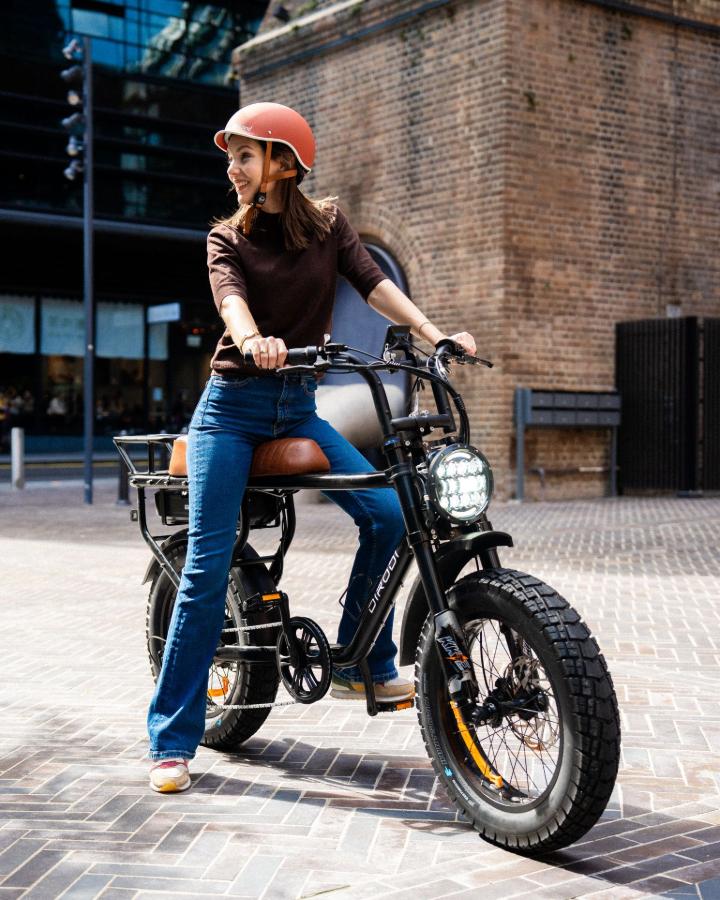
3.1. Best Practices for E-Bike Theft Protection
To minimize the risk of theft, Brisbane e-bike users should adopt multiple layers of security. Below are essential measures:
3.1.1. Use a High-Quality Lock
Not all locks offer the same level of security. Cheap cable locks are easily cut and offer minimal resistance. Instead, invest in a hardened steel U-lock or a heavy-duty chain lock. Brands like Abus, Kryptonite, and Knog (an Australian brand) are popular for their reliability.
Always lock the frame and rear wheel to a fixed, immovable object. If possible, use two locks to secure both wheels and the frame. Avoid locking your bike by just the wheel—many stolen bikes are found without a front wheel, which was left behind.
3.1.2. Choose the Right Parking Spot
Visibility is key. Thieves are less likely to act in public, well-lit, high-traffic areas. Brisbane CBD, South Bank, and major transit hubs have designated bike racks—use those instead of informal or hidden parking areas.
If you’re leaving your e-bike for several hours, consider using secure parking stations or park inside buildings where bike parking is permitted. Many Brisbane workplaces, campuses, and apartment buildings now offer secure bicycle storage facilities.
3.1.3. Remove the Battery
If your e-bike allows for easy removal of the battery, take it with you. This renders the bike less useful to thieves and removes one of the most expensive components. Carrying the battery can be inconvenient, but it’s worth it when parking in public spaces.
3.1.4. Register and Track Your Bike
Brisbane riders can register their bike with services like BikeVAULT or DataDotDNA, which aid in recovering stolen property. Additionally, GPS tracking systems are now available for e-bikes, either built into the frame or hidden inside components like the seat post. Apps such as Apple’s "Find My" or third-party GPS services like Sherlock or Boomerang provide location tracking that could lead to recovery in case of theft.
3.2. Secure Parking Infrastructure in Brisbane
The City of Brisbane has taken steps to improve secure parking for cyclists, although challenges remain. As e-bikes become more common, local authorities and private developers are beginning to incorporate better security features.
3.2.1. CityCycle Infrastructure and Beyond
While Brisbane’s CityCycle program was retired in 2021, many of its docking stations have been repurposed for bike racks and e-scooter parking. These locations are often well-lit and monitored, providing a safer space for parking personal bikes.
3.2.2. Park ‘n’ Ride Facilities
Queensland Rail and Brisbane City Council provide Park ‘n’ Ride facilities at major transit stations such as Toowong, Indooroopilly, and Bowen Hills. These facilities often include secure bike cages that require registration and a security fob for access. They’re ideal for commuters who cycle part of the way and then take public transport.
3.2.3. University and Workplace Facilities
The University of Queensland (UQ), Queensland University of Technology (QUT), and Griffith University all provide secure bike lockers and cages, many of which are under CCTV surveillance. New commercial and residential buildings are also increasingly designed with secure bicycle parking facilities to comply with sustainable transport incentives and city planning regulations.
3.2.4. Smart Bike Lockers
Brisbane has begun rolling out smart bike lockers, accessible via smartphone apps or smartcards, allowing riders to reserve parking in advance. These lockers provide weather protection and high-security storage, especially useful for e-bike commuters.
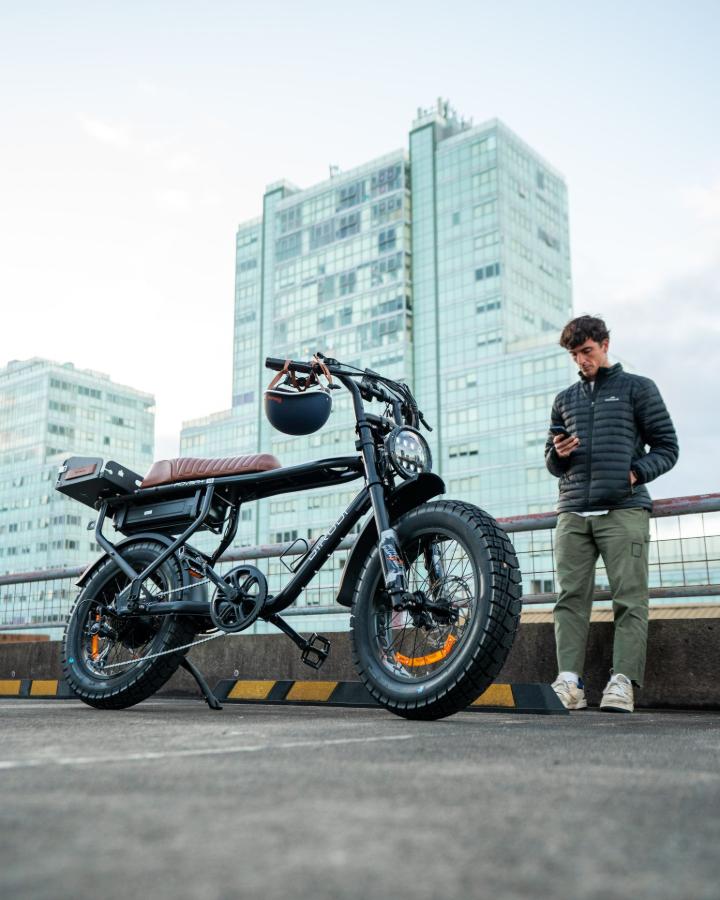
4. Electric Bike Laws and Rules in Brisbane, Australia
As e-bikes grow in popularity across Brisbane and Australia, it's crucial for riders to understand the laws that govern their use. Whether you're commuting through the city, riding for leisure, or exploring Queensland’s scenic trails, staying compliant with local regulations ensures a safe and enjoyable experience.
4.1. Motor Power
E-bikes in Australia are generally classified into two main legal categories, based on how the motor assists the rider and the maximum continuous power output.
1. Pedal-Assisted E-Bikes (Up to 250 Watts): The most common road-legal e-bikes in Australia are pedal-assist models, often referred to as "Pedelecs." These bikes provide electric assistance only when the rider is pedaling. According to national law (except in NSW), these bikes must have a motor with a maximum continuous power output of 250 watts. The motor must cut off at 25 km/h, meaning electric assistance stops once you reach that speed.
A common misconception is that these bikes cannot have throttles. However, a throttle is allowed — as long as its function is limited to assisting only up to 6 km/h. This feature, known as a "start assist," helps the rider get rolling, especially when starting on an incline or from a full stop. After reaching 6 km/h, the rider must pedal to maintain assistance.
2. Throttle-Assisted E-Bikes (Up to 200 Watts): The second category includes e-bikes that can be powered entirely by throttle, without pedaling. These are limited to a 200-watt motor output, and like their 250W counterparts, the motor must stop assisting once the bike hits 25 km/h. However, due to the limited power, 200W throttle-only bikes struggle on hills and are less commonly manufactured or used in Melbourne.
As of February 2023, NSW updated its e-bike laws to allow 500W pedal-assist e-bikes, while maintaining the same throttle limitations (200W max). However, this increase in power does not apply in Victoria, where the 250W limit still stands for pedal-assist models.
4.2. Speed Limit
Although legal limits cap assistance at 25 km/h, e-bikes are often capable of higher speeds. For example:
- A 250W motor might reach speeds of 30 km/h with moderate pedaling.
- A 500W e-bike can reach 35–40 km/h.
- A 750W motor could go up to 50 km/h, depending on terrain and rider input.
However, using a high-powered e-bike above legal limits on public roads can be illegal. Some e-bikes, such as the DiroDi Rover 750W, come with settings that allow power limiting to 250W for road use. Still, authorities have not clearly defined whether this guarantees compliance, so it’s advised to consult your local transport department before using such bikes on public roads.
4.3. Helmets
Across all Australian states, including Victoria, wearing a helmet while riding an e-bike is mandatory. The helmet must be approved and certified to Australian Standard AS/NZS 2063, with newer models (post-2011) marked for compliance. Failure to wear a helmet can result in fines of up to $300 in Victoria — but more importantly, helmets help prevent serious head injuries in accidents.
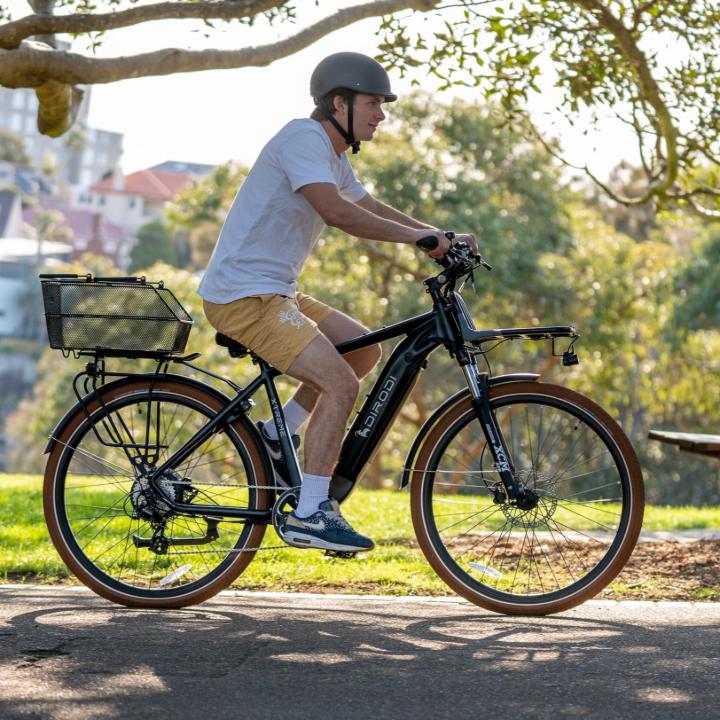
4.4. Carrying Passengers
The legality of carrying passengers depends on who the passenger is and how they’re being transported:
- Children can legally ride on e-bikes using certified child seats or bike trailers.
- Carrying adult passengers is generally not allowed, unless your bike is specifically designed and approved for it — which most standard e-bikes are not.
4.5. Licensing, Registration, and Road Use
You do not need a driver’s license to ride a legal e-bike in Australia. E-bikes are not required to be registered or insured like motor vehicles, as long as they conform to the definitions laid out by the Australian Road Rules:
- Throttle-assisted: max 200W, up to 25 km/h
- Pedal-assisted: max 250W, throttle assist only up to 6 km/h, also limited to 25 km/h
4.6. E-Bike Rules Specific to Queensland
In Queensland, electric bikes (e-bikes) are becoming a popular mode of transport, particularly for urban commuting. The rules and regulations surrounding e-bike use are fairly straightforward and are mostly consistent with those in other Australian states. However, it’s important for all riders—especially new ones—to understand and follow these guidelines to ensure safety and compliance.
Firstly, helmets are mandatory for all riders unless a medical condition prevents their use. In such cases, a medical certificate must be carried at all times while riding.
Secondly, carrying passengers on your e-bike is only allowed if the bike is designed for that purpose (for example, having an extra seat or appropriate footrests). Using a regular single-rider bike to transport passengers is not permitted.
Queensland allows e-bikes to be ridden on special-purpose lanes, such as bike lanes, bus lanes, and tram lanes. However, when using these lanes, riders must keep to the left, give way to buses and other larger vehicles, and avoid overtaking dangerously.
There is also an age restriction: riders must be at least 16 years old to operate an e-bike unsupervised. Those under 16 may ride only under adult supervision.
In addition to these riding rules, there are important equipment requirements. Your e-bike must be fitted with a working white front light, a red rear light, and a bell or horn for safety and signaling.
These are just some of the core e-bike regulations in Queensland. To avoid fines or accidents, it's essential to be well-informed. For the full list of e-bike rules and detailed guidance, visit the official Queensland Government transport website:
https://www.qld.gov.au/transport/safety/rules/wheeled-devices/bicycle
Check out our guide to Electric Bike Laws & Road Rules in Australia for a more detailed explanation of the laws in every Australian state.